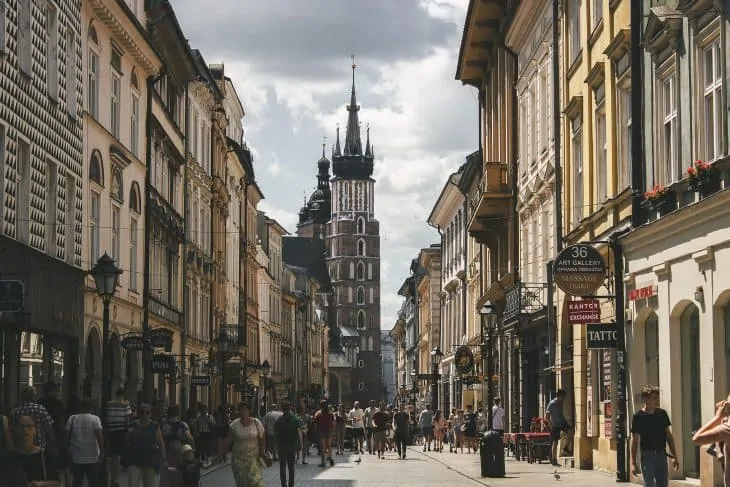
Found in Eastern Europe, Poland holds centuries of Jewish heritage and medieval architecture. It’s home to many museums, historic buildings, and even real-life castles. What’s more amazing is that Poland has also birthed many popular scientists and people thriving in their field of expertise. This only gives you a few more reasons to contemplate and appreciate it on a whole new level. Discover the wonders and history of this country with these Poland facts.
- Poland is Europe’s 9th biggest country with a land area of 312,685 square kilometers.
- Approximately 38.5 million people live in Poland.
- Poland became independent from Russia and established itself as a Republic on November 11, 1918.
- Mieszko was the earliest recorded ruler of Poland, dating back to 963 A.D.
- In the 10th century, Poland adopted Christianity.
- Poland comes from the tribe name “Polanie: which translates to “people living in open fields”.
- King Kazimierz Jagiellończy was from Poland and he got the title “Father of Europe.”
- When Germany invaded Poland, it marked the start of World War II.
- In 1989, Poland became a multi-party democracy. Before that, the country was under communist ruling for so many years.
- There are at least 2,000 lakes in Poland.
- On November 11, Poland commemorates its Independence.
- They are fond of their alphabet in Poland as they have 32 letters compared to the 26 letters in English.
- Piwnica Swinicka has been open for business in Poland since 1275, making it Europe’s oldest restaurant.
- The Auschwitz Concentration Camp was in Poland.
- Franciszek Gąsienica Groń won the bronze medal in the 1956 Olympic Medal which was Poland’s first win in the national Winter Sports.
- About 90% of people living in Poland are Roman Catholics.
- Pustynia Błędowska is in Poland as it’s the only desert in Central Europe.
- Poland’s national symbol is the white-tailed eagle.
- For non-native speakers, Polish is one of the world’s most difficult languages to learn.
- Poland has the most winnings in the World’s Strongest Man title than the rest of the world.
Poland once disappeared from the map of the world.
One of the least known Poland facts is that the country fought a hard fight to be where it is now. From the year 1772 until 1795, Poland disappeared on the map. Before its independence, Poland had to face around 40 insurrections.
If you have been following Game of Thrones, there’s a big chance that you’d come to know more about Polish Medieval History to follow the seasons quickly.
A telecommunications tower in Poland was once the world's tallest structure.
Found in Gąbin, Poland, the Warsaw Radio Mast telecommunications tower stood at 646.38 meters or 2,121 feet. Since 1974, it has been considered the world’s tallest infrastructure. Unfortunately, the tower got torn down on August 8, 1991. Today, the world’s tallest structure is the Burj Khalifa in Dubai which stands 2,716 feet.
Poland was the 2nd country in the world to have a legal constitution.
In 1791, Poland established its first written constitution. When it was published, it was only the world’s second legal and valid document of its kind. However, this feat was short-lived as it only lasted 14 months and 3 weeks. After this period, the country got divided into partitions for at least 100 years.
Warsaw, Poland's capital, once got destroyed.
Like many other places, World War II caused more damage than you could imagine in Warsaw. The original face of Warsaw got bombed in the ’40s, only rebuilt by the Polish right after the war.
Upon reconstructing the Old Town, the Polish government used the detailed art of 14th century painter Bernardo Bellotto. This explains why the place reflects more of an older vibe compared to its actual establishment in the 20th century.
Poland is located in Central Europe.
The Republic of Poland experiences a temperate and seasonal climate. Found in Central Europe, the country has borders in the Baltic Sea, Slovakia and the Czech Republic to the South, Lithuania, Ukraine and Belarus to the East, and Germany to the West.
In terms of land area, Poland measures slightly smaller than New Mexico, but is 1.3 times bigger than the United Kingdom.
Names in Poland may change depending on gender.
Unlike most countries where children get a certain last name regardless of gender, Poland is different. A baby boy would have a surname that ends with “-cka/-cki” and a newborn baby girl will have “-ski/-ska”.
For example, if your father’s last name is Kowalski and you are a girl, you will have Kowalska as the last name. However, all Polish surnames in the United States use the male versions. Now there’s one for interesting Poland facts.
Poland has a total of 16 World Heritage Sites.
UNESCO World Heritage Sites are important places that have a natural and cultural heritage. In particular, Poland has 16 World Heritage sites, with the first two added on the list in 1978.
Poland also holds the biggest castle in the world.
Among the World Heritage Sites that Poland holds is the Malbork Castle built in the 1400s by the German military order, Teutonic Knights. Although Prague claims that they have the world’s largest castle, UNESCO has not qualified it. Measured by its area of 52 acres, the Malbork Castle is the largest brick structure in the world built by hand. Definitely, one of the most amazing Poland facts.
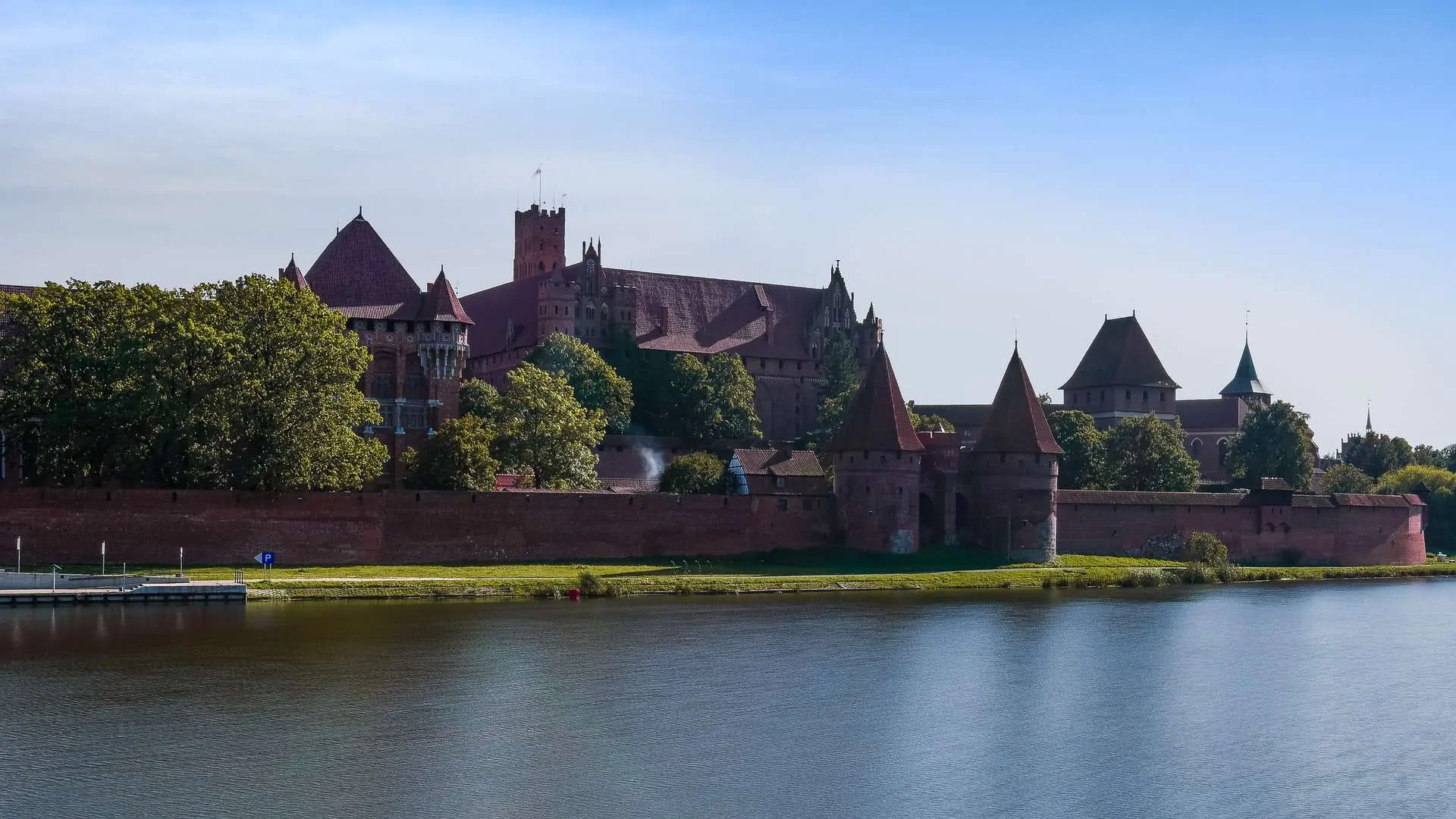
It's rude to wear a hat inside the house in Poland.
The present and younger generation in Poland do not really mind wearing hats inside someones’ house or at church. However, the older generation is still very specific about it.
If you are planning to visit Poland anytime soon, remember to take off your hat when you enter a church or someone’s house. Your hosts may find you disrespectful and feel uncomfortable.
It's normal to kiss a stranger's hand in Poland.
Although this practice has long been forgotten, Polish men still observe the protocol of chivalry. Do not be surprised if you’re introduced to a new set of people and they kiss your hand – it’s a normal thing Polish men do.
Be ready to get wet during Easter in Poland.
While the Songkran Festival in Thailand uses the pouring of water as a sign of cleansing, Poland also has its own version. During Easter Monday or Smigus Dyngus, people chase one another with buckets and water guns. In their olden tradition, boys would throw water on girls and whack them with the branches of pussy willows.
Of course, the girls will also fight back. Definitely one of the Poland facts you’d have to see for yourself.
Aside from birthdays, people in Poland celebrate their "Name Day".
If you’re Polish, you’d look forward to two things in a year- your birthday and your name day. Also called Imieniny, Poles commemorate the saints that they’re named after on this day. They say that it’s even more important than your actual birthday as everyone remembers it. The names that are associated with the celebration are all listed in the calendars all over Poland.
Polish movies are dubbed.
If you’re planning to watch foreign movies in Poland, you may want to reconsider. Most foreign movies and sitcoms get subtitles, but Poland has a different thing going. For most popular media, Poland has the material dubbed with one man reading all the parts of the actors including men, women, and children alike. Yes, it’s basially a one-man dubbing show.
You may still hear the original version or the voices of the actors in the first two seconds of the line but eventually, you’d hear the reader in a translated version. Definitely, one of the weirder Poland facts.
Poland is the biggest amber exporter in the world.
Made of fossilized tree resin, Poland is the world’s biggest exporter of this precious material. If you happen to come across amber jewelry and ornaments that are Polish-made, it’s sure to be gorgeous!
Kids in Poland love mushroom-picking.
Every country has its own hobbies and family activities that they’re known for. At an early age, kids in Poland are taught to identify poisonous and edible mushrooms. Additionally, picking wild mushrooms in the summer is a popular family activity for many locals. Isn’t that one for lovely Poland facts?
It's a faux pas to buy flowers in even numbers in Poland.
Much like other cultures, funerals are considered sacred in Poland. When it comes to paying respects to the grieving family, the Poles highly discourage bringing flowers in even numbers. Additionally, people in Poland strictly reserve white lilies, chrysanthemums, and red carnations for funerals only.
A Pole invented latex condoms.
Julius Fromm from Poland came up with the idea of creating the very first latex condom in 1912. He made his invention better and thinner to entice Polish people into using it as a safe contraceptive.
Ironic as it may seem, the use of contraception remains a controversial topic for the Polish government.
Poland has its own version of Valentine's Day.
Every June 21st, Poles celebrate Kupała or Wianki during the Feast of St. John the Baptist. In this event, men jump on bonfires while women await for wreaths. Wreaths with candles are floated from one end of the river to the other. If one of these wreaths come to you, it is said to bring luck for your love life.
Poland has the world's tallest statue of Jesus.
Contrary to the common belief that the tallest statue of Jesus is Brazil’s Christ the Redeemer, it’s actually not the case. Instead, this title belongs to the Pomnik Chrystusa Króla or Christ the King statue in Świebodzin, Poland.
Completed on November 6th, 2010, the statue stands 108 feet tall with its crown at 9.8 feet. Overall, it stands at 172 feet from its mound.
The first modern kerosene lamp was invented in Poland.
Polish engineer Ignacy Lukasiewicz invented the first modern streetlamp in 1853. Though his first inventions were initially used in Ukraine, Warsaw still keeps the memory of his invention alive.To this day, a street in Warsaw still uses the same lamps that Lukasiewicz made back in the day. How’s that for remarkable Poland facts?
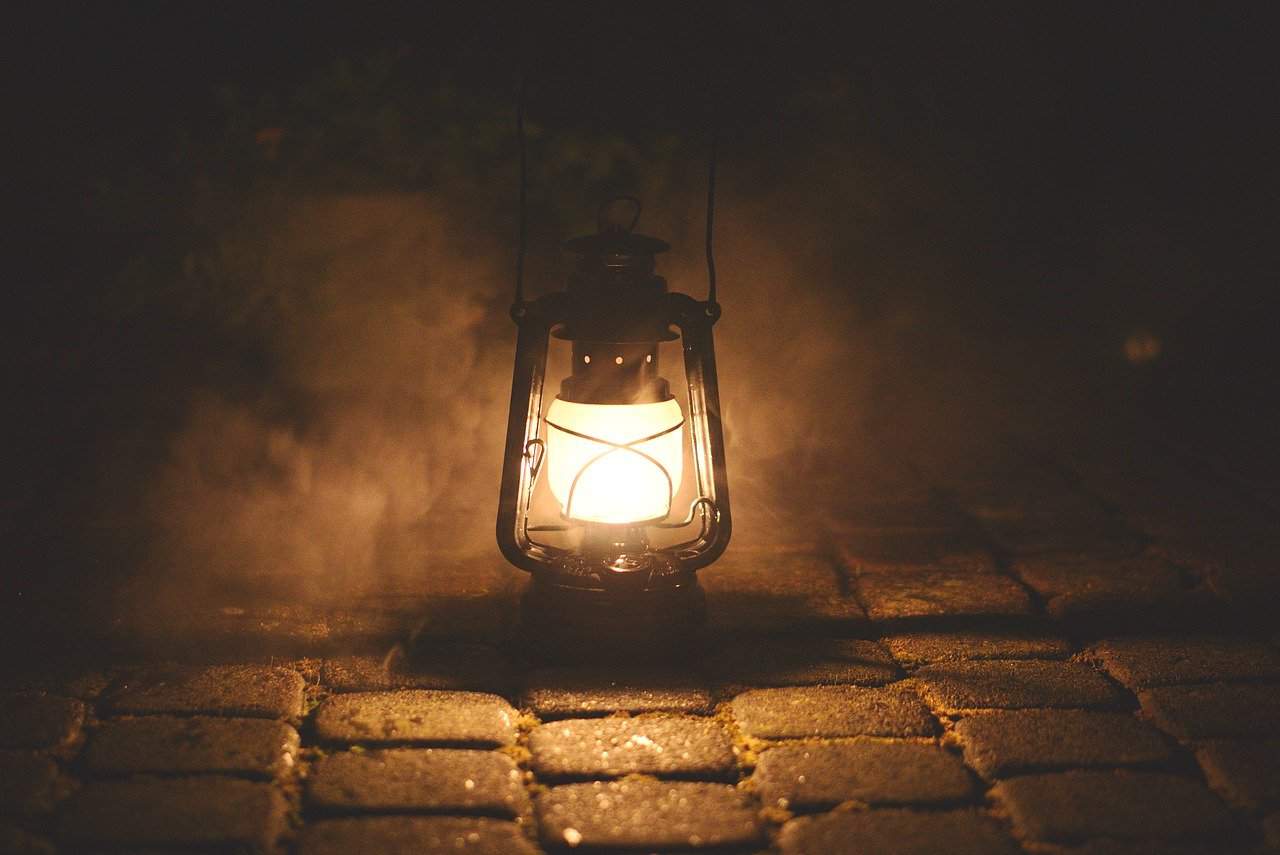
Marie Curie was Polish, not French.
Known as the Mother of Modern Physics Marie Curie was actually of Polish descent. Before marrying her French husband, Pierre Curie, she was named Marie Sklodowska. Together, the two discovered radium and polonium.
Because of this, she made a mark in the world of science and became the very first woman to bag a Nobel Prize – not only once, but twice.
A city in Poland celebrates a lot of annual festivals.
Wroclaw, Poland holds a myriad of yearly festivals that are known far and wide. These festivals cover different activities from jazz acts, one-actor performances, literature, and many more. Definitely one of the Poland facts to remember if you plan on visiting soon.
You can study for free in Poland.
One of the best Poland facts is that the country offers free college tuition. If you are a Polish citizen, you can study higher education or college free of charge in state-run universities.
However, for international students, tuition fees can range from $2,300 to $4,200 in a year.
US Citizens can enter Poland without a visa.
Since the US and Poland have the Schengen Agreement, US citizens can enter the country without visas. In line with this, US citizens can stay in Poland for up to 90 days or 3 months for business or tourist purposes.
Of course, your passport should still be at least 3 months valid before you visit the country.
Poland's flag shares a similar design with Monaco and Indonesia.
Monaco and Indonesia’s flags both feature two horizontal bands, with red on top and white below. Similarly, the Polish flag features an inverse of both colors, which draws inspiration from the Polish emblem of a white eagle on a red field.
The national anthem of Poland has a unique history.
Commonly known as the Jeszcze Polska nie zginęla, Dąbrowski’s Mazurek is Poland’s national anthem. Also translating to “Poland Has Not Yet Perished,” it was written by Jozef Wybicki in 1797.
This was also around the time that the Polish troops fought beside Napoleon Bonaparte in Italy. In a way, the song was written as a fight song to boost their morale.
The Mongols displayed the head of a Duke as a culmination of their invasion in Poland.
From 1240 to 1241, the invasion of the Mongols in Poland came to an end after the Battle of Legnica. Along with the European fighters, the joint forces of Moravians and Poles fought to stop the invasion of the Mongols in Europe.
However, their efforts proved unsuccessful, since the Mongols crushed the alliance. Adding insult to injury, the Mongols displayed the head of Henry II the Pious at Legnickie Pole as a sign of victory.
The German invasion in Poland caused World War II.
Headed by Adolf Hitler, the Germans invaded Poland on September 1st, 1939. Though the process lasted merely a month, it sparked a six-year-long war that got tens of millions of people killed.
After breaking through the defenses of the Polish along the borders, the invaders set camp in Warsaw. Two days after the start of the invasion, France and Britain declared war with Germany – essentially starting World War II.
Poland was a primer for Hitler to wage an all-out war.
Hitler invaded Poland as part of his blitzkrieg strategy. By definition, it’s an intense military campaign meant to ensure a swift victory. As it turns out, the Nazi and German leader took Poland to provide more “living space” or Lebensraum for the people of Germany.
According to history, Hitler did it on purpose so that the Germans could regain their lost territory and eventually rule other neighboring countries in Europe. This is definitely one of the saddest Poland facts that we know today.
Poland got its independence from Russia in 1918.
After more than a century of partition by the Russian, Austria-Hungary, and German Empires, Poland became an independent republic on November 11th, 1918.The Poles started to celebrate their Independence Day on November 11, 1937. Since then, it has become one of the most important national holidays in Poland. Definitely one for memorable Poland facts.
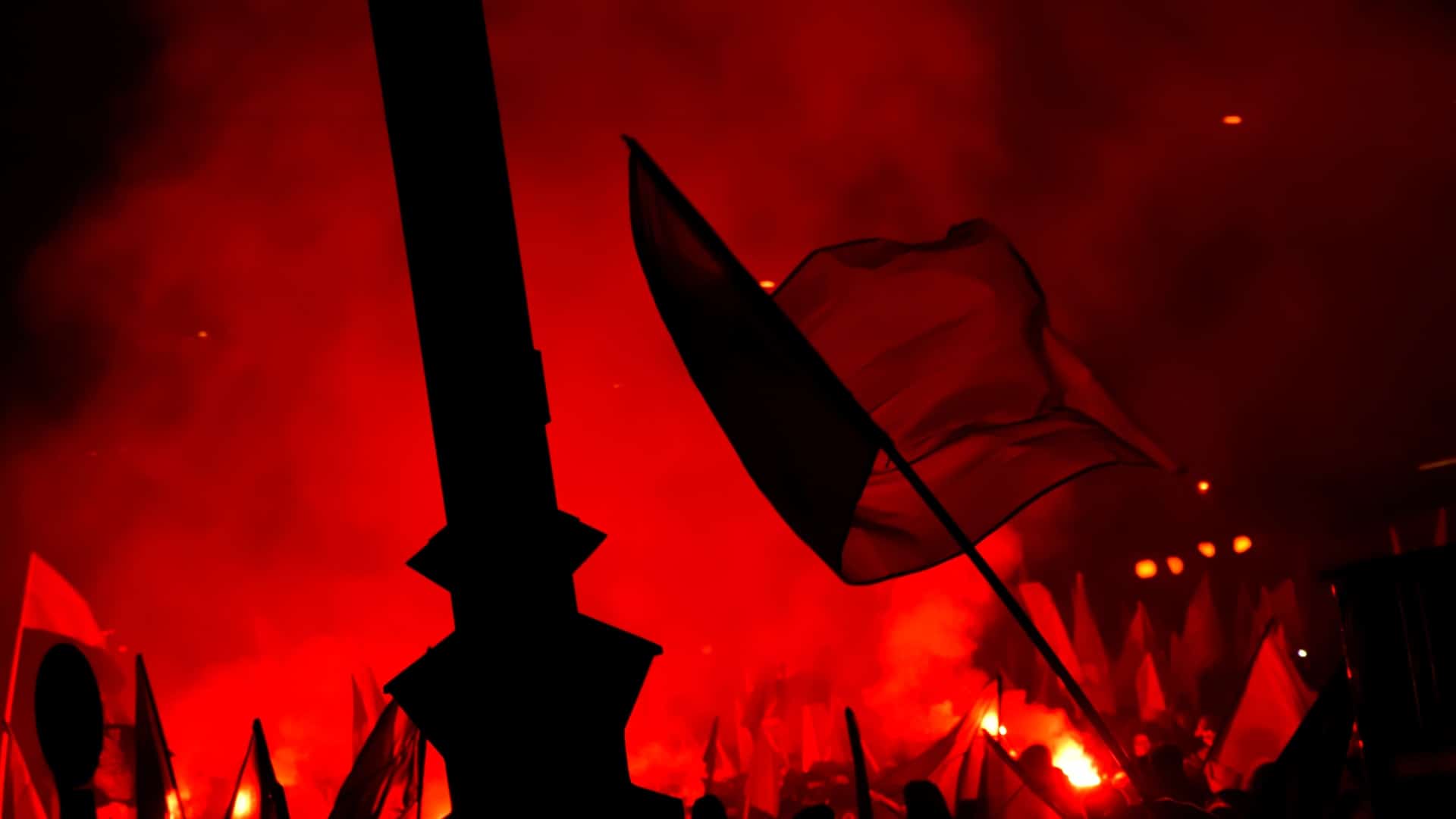
Poland was once under a Communist Government.
From 1939 to 1989, the Polish were forbidden from celebrating their Independence Day. For 45 years, the Poles lived under a Communist government where all the country’s key decisions were dependent on Moscow.
After the collapse of the communist government, the Polish had a newfound appreciation of what it means to be free.
Poland currently has a Parliamentary Republic government.
Currently, Poland operates on a framework of a Unitary Semi-Presidential Representative. For this democratic republic, the Prime Minister serves as the government’s head, while the President serves as the head of the state.
In a nutshell, it’s the prime minister who holds the real power while the head of the state has other influences when it comes to decision-making.
The last Monarch in Poland spent his last days in Russian prison.
From 1764 to 1795, Stanisław August Poniatowski served as the Grand Duke of Lithuania and the King of Poland. He stands out for being the last Polish–Lithuanian Commonwealth monarch. In the last years of his life, Poniatowski spent his time in St. Petersburg’s Marble Palace in Russia. Unfortunately, he died on February 12th, 1798, due to a stroke.
The first democratically elected president of Poland died 5 days after taking office.
Initially a hydroelectric engineering professor, Gabriel Narutowicz became Poland’s first elected President on December 11, 1922. However, he was assassinated 5 days after he got the position on December 16th of the same year. This is definitely one of the crazier Poland facts.
A national poem in Poland has an ironic opening verse.
Polish poet and author Adam Mickiewicz wrote Pan Tadeusz or Master Thaddeus in 1834. Despite being one of Poland’s national poems, it opens with the verse: “Lithuania, my fatherland!”
The Auschwitz-Birkenau Concentration Camps were in Oświeçim, Poland.
At the peak of World War II, the Nazis established a concentration camp in Auschwitz, Poland. The first batch of killings in the camp took place on September 1941.
Most of the camps’ prisoners were Jewish, who died gruesome deaths by gassing and other inhumane means.
Warsaw was not Poland's first capital.
Warsaw only became Poland’s official capital on Feb. 1st, 1945. Before Warsaw, Gniezno was Poland’s very first capital. After the founding of Poland as a state in 966 CE, Duke Mieszko got christened and took over as a leader of the country. Since the seat was with the Archbishops at the Gniezno Cathedral, Gniezno effectively became Poland’s first capital.
A German Colonel attempted to assassinate Hitler in Poland.
Colonel Claus von Stauffenberg made an unsuccessful but courageous attempt to kill Hitler on July 20th, 1944. Although the colonel successfully planted the bomb at the Wolf’s Lair, the dictator was not killed. A day after his short attempt, he met his untimely death by a firing squad.
Pączki is a traditional pastry in Poland.
Pączki is a Polish doughnut shaped in spheres and filled with sweet fillings. Traditionally reserved for Fat Tuesday, Catholics would indulge on this sweet treat before the Lenten season. Because of this, Polish people eat at least 100 million pączki’s on this day alone.
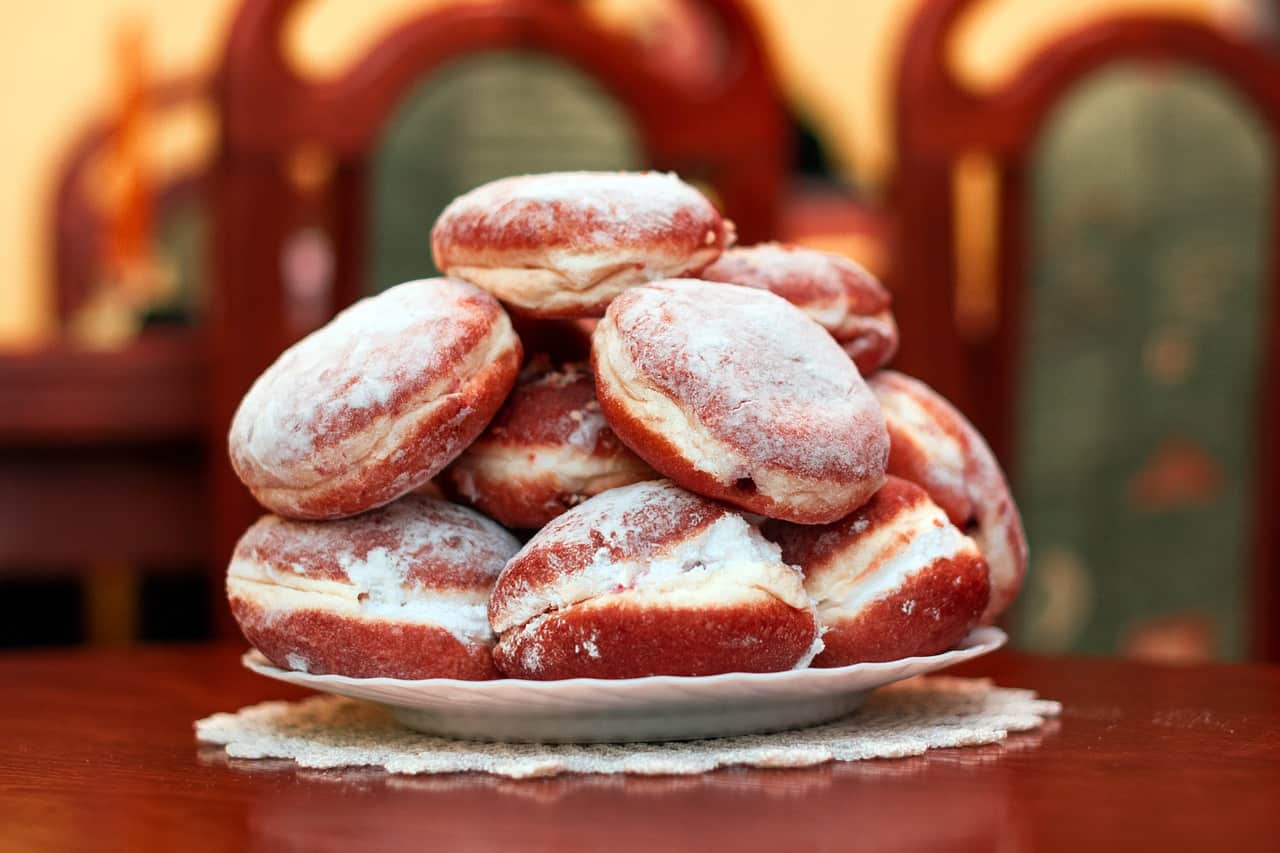
World War II was rough in Poland.
During the invasion of Germans in Poland, the Nazis equally terrorized the Polish as and the Jewish. After two Polish women tore down Nazi placards, the dictator issued the first death sentence for Polish citizens on November 3rd, 1939.
The remains of a Polish Nobel Laureate lies in Warsaw, Poland.
Known for his novel Quo Vadis, Henryk Sienkiewicz lies at St. John’s Cathedral in Warsaw despite dying in Switzerland. While his coffin traveled from Switzerland to Poland, several ceremonies were held in many cities of the country.
Napoleon Bonaparte had a mistress in Poland.
Napoleon Bonaparte headed the French military as the French Revolution’s artillery commander. During his stay in Poland, he had already been married to Empress Josephine Bonaparte when he pursued an affair with Countess Maria Waleska.
Being a Polish elite, Bonaparte met her at the Royal Castle or Zamek Królewski at Warsaw in 1806.
The Father of Modern Astronomy came from Poland.
Mikołaj Kopernik or Nicolaus Copernicus was a Polish astronomer and a mathematician. He changed the world by theorizing that the sun was actually stationary at the universe’s center while the Earth revolves around it. His Heliocentric Theory was the first to propose that all the planets in the universe revolve around the sun.
Schindler's List was a movie about the life of Jews in Poland during World War II.
Based on Thomas Keneally’s novel of the same name, and the plot follows the life of German industrialist, Oskar Schindler. Schindler used his business to shelter and help thousands of Polish Jews during the height of World War II.
As compelling as the story was, the movie won an Academy Award while the book won the 1982 Booker Prize Award.
Pope John Paul II was from Poland.
On October 16th, 1978, Cardinal Karol Józef Wojtyla became the Roman Catholic’s 264th Pope. As Pope John Paul II, he wrote his document of Joy and Hope or Gaudium et Spes. Nine years after his death on April 2nd, 2005, he was canonized on by the Catholic Church as a saint.
Poland has won many Nobel Prize Awards.
To this day, Poland has received more Nobel Prizes than Australia, India, Japan, and China combined. In total, the country has 17 Nobel Prize laureates, which include five for Literature and four Peace Prizes.
The Marks & Spencer founder is Polish.
Originally from Poland, Michael Marks fled to Britain to escape the persecution of Jews in the country. He started out by selling household goods in an open market in Leeds’ Kirkgate. Later on, he co-founded the Marks & Spencer Department Stores empire with Tom Spencer in 1894.
Poland has the oldest salt mine in the world.
Built in the early 13th century, Poland’s Wieliczka Salt Mine produced the country’s table salt until the late 2007. Stretching 287 km long and 1,073 km deep, it only serves as a mere attraction today with 1.2 million visitors each year.
The salt mine’s main attraction is an entire cathedral that’s carved out from rock salt courtesy of the miners. It includes three chapels and a dozen statues. Because of these structures, it’s also known as the “Underground Salt Cathedral of Poland.”

The Father of the American Cavalry also hailed from Poland.
Recruited by Benjamin Franklin, Casimir Pulaski fought with the colonists during the American Revolutionary War. Unfortunately, he met his death in Georgia’s Battle of Savannah on October 9th, 1779.
An astronomer from Poland made the first maps of the moon.
Aside from being a mayor and councilor in Danzig, Poland, Johannes Hevelius founded Lunar Topography and became the first to describe and name ten kinds of new constellations.
Out of those discoveries, astronomers still use 7 constellations as a reference today. Hevelius also published the earliest and most precise maps of the moon. This is definitely one of the coolest Poland facts here.
Chopin was originally from Poland.
Contrary to popular belief, the famous musical composer Frédéric François Chopin was not French. Instead, he lived in Żelazowa Wola, Poland for 20 years. However, he left the country in 1930 and never returned. Paris became his home, where he eventually died in 1849. Today, Chopin’s remains lie in Paris’ Père-Lachaise Cemetery.
A Polish professor created one of the oldest musical competitions in the world.
One of the world’s most prominent music competitions is the International Fryderyk Chopin Piano Competition. Polish Professor Jerzy Zurawiew first held the ompetition at the Warsaw Philharmonic in January 1927. Since then, it took place every 5 years and was only interrupted in 1942 during the heights of World War II.
The first football club in Poland was formed in 1903.
The humble beginnings of soccer and football in Poland were a seven-minute game in July 1894. In 1903, the Sława Lwó (later the Czarni Lwów), was formed, becoming the first football club in Poland. The country’s first match faced them off with Hungary, in which Poland lost the game at a 0-1 score.
Poland sent fighter pilots during World War II.
Historically, Poland sent the Allied at least 144 fighter pilots over the course of the second world war. Poland’s pilots were responsible for the 204 and other 35 German planes that were shot down during the 1940’s Battle of Britain. In total, the Polish squadron accounted for 12%-14% of losses on the German’s end.
The Battle of Monte Cassino was an important action by Poland soldiers.
Up to this day, the Poles still consider the Battle of Monte Cassino as one of the most important actions of the Polish Military in World War II. The battle took place in a Benedictine monastery in Italy where the Allied repeatedly met failures in taking over.
Finally, General Władysław Anders from the Second Polish Corps led its soldiers to battle and won over the monastery. However, the losses were heavy, too. Today, streets in Poland are named after the battle to commemorate what happened during the war. This is definitely one of those Poland facts that will make you want to look back on its history.
Poland's oldest university is in Krąków.
King Casimir III the Great established Jagiellonian University in 1364, making it the oldest university in the country. Still found in Krakow, the university also serves as Central Europe‘s second-oldest institution.
The Johnson & Johnson Company is owned by a Polish businesswoman.
Born in Poland, Barbara Piasecka Johnson founded the Johnson & Johnson Company with her husband, John Steward Johnson. When he died in 1983, Barbara was left with all the money. This placed her on the Forbes list of 400 World’s Richest People in 2007. Today, her net worth is estimated to be approximately $2.7 billion. That said, this makes her the world’s 149th richest person.
Poles love their beer.
The Poles rank third among the countries in Europe that consume the most beer. Following the Czech Republic and Germany, Poland consumes an average of 92 liters of beer annually.
The first cookbooks in Poland date back to the year 1682.
First printed in 1682, Stanisław Czerniecki’s cookbook Compendium ferculorum albo Zebranie potraw also translates to “A Collection of Dishes.” The cookbook includes than 300 kinds of recipes divided into three chapters. Most of the recipes in the cookbook draw from Tartar-Turkish, German, and Lithuanian influences. To his day, Polish cooking still references this cookbook.
Pierogi is Poland's version of dumplings.
Polish dumplings or Pierogi are made from wrapping unleavened dough with a sweet or savory filling in boiling water. After straining it out, the dumplings are pan-fried before it gets served. It’s also one of Poland’s most recognizable dishes anywhere in the world. Talk about yummy Poland facts.

Vodka was used as a medicine in Poland.
For more than 5 centuries, Poland has been known for its production of high-quality vodka. The earliest versin of Polish vodka was Gorzalks, which was also used in medicine and other treatments. From its first debut in the early 11th century, Polish vodka has only improved in quality through the years.
Pizza in Poland does not have tomato sauce.
Zapiekanka is Poland’s version of pizza. The twist here is that it does not contain any tomato sauce. Typically, this Polish street food has a baguette base with lots of mushrooms, ketchup, and melted cheese on top.
Poland hosts Europe's largest open-air festival.
Traditionally, Przystanek Woodstock comes from the original Woodstock Rock Festival. Since 1995, this annual rock festival has been offered for free. Because of this, the festival has 625,000 people attending the festival on an average scale. No wonder why it’s Europe’s biggest open-air concert.
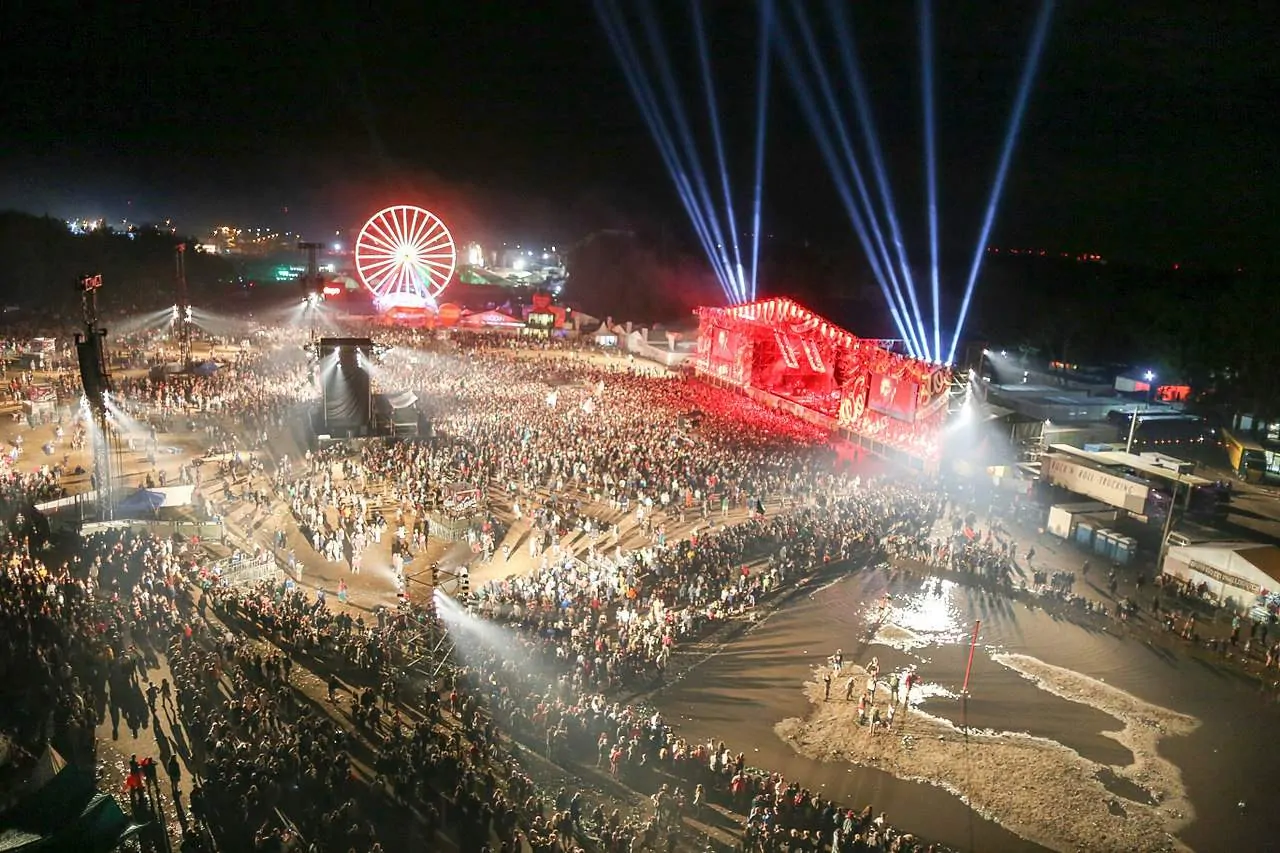
Poland houses the heaviest animals in Europe.
Białowieża Primeval Forest covers 150,000-hectares or 380,000-acres in land. As the last ancient forest in Europe, this Polish forest houses around 800 bison, which are the heaviest land animals in Europe. On average, a male bison can weigh up to 990 kg while females can reach 540 kg
Poland follows the CET time zone.
Poland uses the Central European Time Zone or CET, which is GMT+1 or Greenwich Mean Time an hour ahead. However, Poland may also follow Central European Summer Time or CEST during the summer. This is definitely one of the most helpful Poland facts on the list.
Poland's official language is tricky.
Polish people have problems speaking and writing the Polish language correctly because it’s so complicated- not to mention tricky. They have a complex grammar system with difficult pronunciations.
Plus, the language is a mixture of noun inflection and verb conjunction, which makes it even harder. What’s more is that the same words may only differ depending on gender and cases. Do not feel bad if you’re learning it the hard way, everyone’s on the same boat as you.
Marzanna-making is a popular tradition in Poland.
Winter lasts for a long time in Poland. Because of this, the Poles need to endure the cold and wind for most months in the year. That’s why when spring comes, children and adults alike spend the first day in a rather grand fashion.
Traditionally, the children make Marzanna or a straw doll with ribbons. Once done, the doll is set on fire and the Marzanna is dropped in the lake. It’s a Polish tradition meant to symbolize saying goodbye to winter and welcome the Spring.
Poland has an artistic capital.
Known as the country’s artistic capital, Krakow holds around 28 museums including many public art galleries and art collections.
A dynasty in Poland has one of Europe's largest fortunes.
Scholars believe that the Jagiellonian Dynasty of Poland possessed the largest fortunes in European history. Unfortunately, these treasures were mostly lost when Bona Sforza died and took most of the valuable jewels in Italy with him.
Stalin's secret army of police killed many Polish citizens.
Historians say that at least 284 Poles were killed and murdered by Stalin’s secret police between 1945-1956. These were Poles deemed threats to the regime. With this belief, the Polish Institute of National Remembrance did an exhumation in the Warsaw military cemetery.
It’s a nationwide project aiming to find the burial places of those victims and to have the opportunity to identify the dead bodies. We can say that it tops the list among all these heartbreaking Poland facts.
Poland has many popular drinks.
Commonly known as orangeade, Oranzada is a popular Polish drink. It’s a sweet and carbonated drink with a kick of orange flavor. Though originally from France, it became popular in Poland during the late 18th century.
Poland is rich in forests.
Forests in Poland take up at least 30% of the land area of the country. In fact, it’s the fourth country with the most forests in Europe. Most of the forests you can find in Poland are state-owned. According to history, there were more forests for around 40% during the 18th century. However, land partitions and economic exploitation shrunk Polish forests to 21% over time.
Poland has the most traded currency in Central Europe.
Polish people use Polish złoty as their official and legal tender currency in the country. Worldwide, it ranks 22nd in the foreign exchange as Central Europe’s most traded currency.
Poland has a bottled water brand.
Poland Spring is a bottled water brand manufactured in Poland, Maine where you can find Poland’s original natural springs. In 1859, the Spring was first commercially developed by Hiram Ricker who was a business owner of a small inn nearby the city. Today, Poland Spring is sold in the US as a Nestle subsidiary.
Poland's weather is unpredictable.
Poland experiences warm to very hot weather in the summer but also cold winters and sunny autumns. You can expect the mountainous area to be covered with snow from December to April, while rain may fall throughout the rest of the year in the country.
Poland is coldest in January.
Since Poland lies in a zone with moderate climate, the coldest months in Poland’s capital occur around January and February. The lowest temperature drops to 23.4ºF, while the highest is at 32.7F. This climate makes Poland’s mountains ideal for winter sports and activities, too.
Poland became a member of the EU in 2004.
The European Union is an economic and political union of 27 members. Overall, it aims to ensure a free movement of goods, services, and people within the internal market in the Union. Under Athen’s Accession Treaty in April 2003, Poland officially became a member of the EU in May 2004.
Poland's tourism grew after the country joined the EU.
When Poland joined the European Union in 2004, the country got more visitors. Tourists deemed the country to be a safe place to visit, with tourism experiencing an upwards trend to this day.
People in Poland also speak English.
Aside from their official language, Poles speak English fairly widely. In fact, ⅓ of Poles can speak English to some degree. The ratio of the Poles that can speak English goes up in tourist destinations and major cities. If you’re a tourist, you will not have trouble finding people that can help you without making the effort to learn Polish.
Poland's current president faces a lot of protests.
When he took the oath for his second term in 2020, he faced a lot of silent protests because of these policies. One of the hottest issues is the president’s recent hostile comments against the (LGBTQ) community. The activists placed rainbow flags in the country’s public monuments. Meanwhile, the female legislators that went to the president’s inauguration wore colorful dresses to show their support to the LGBTQ community.
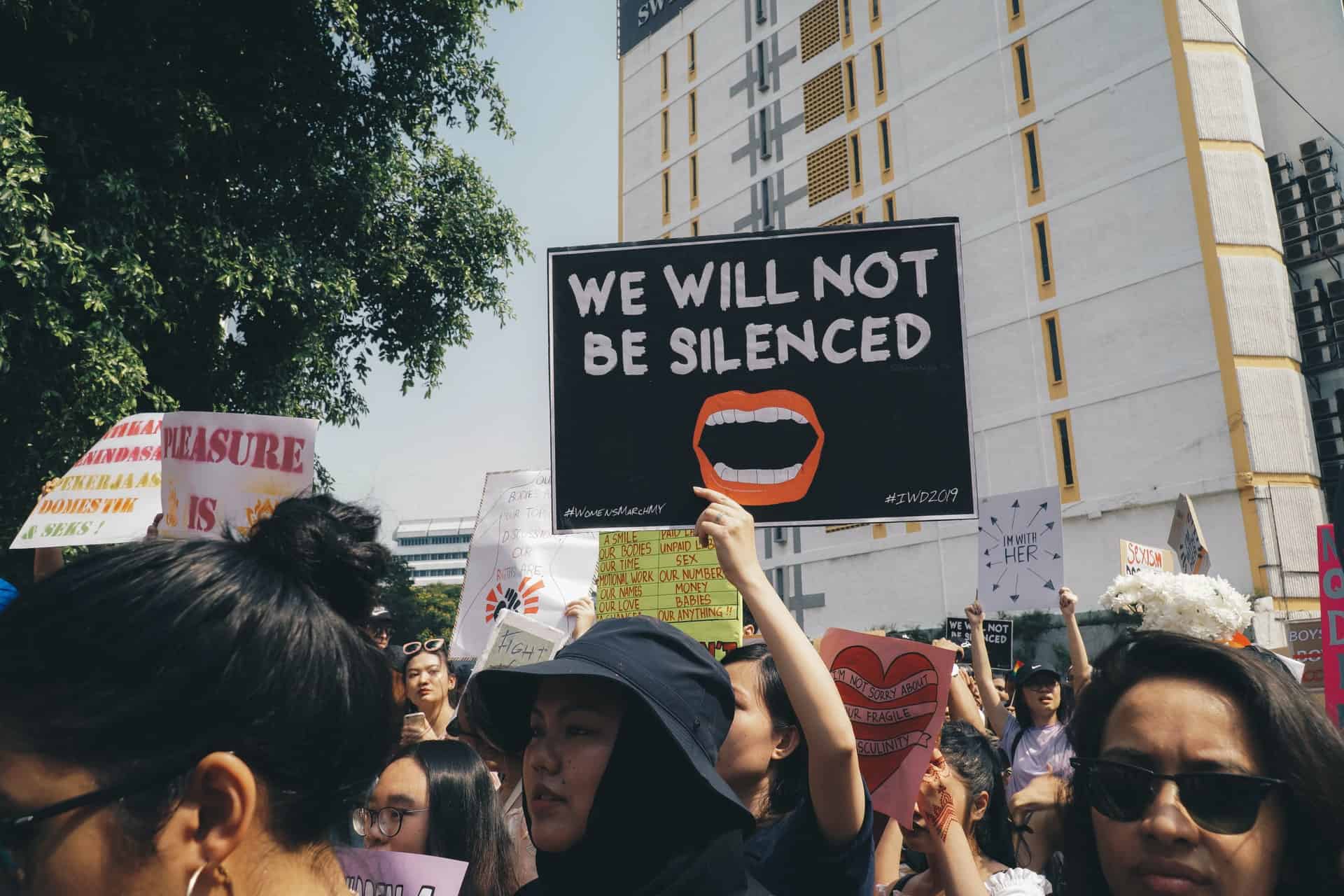
Was this page helpful?
Our commitment to delivering trustworthy and engaging content is at the heart of what we do. Each fact on our site is contributed by real users like you, bringing a wealth of diverse insights and information. To ensure the highest standards of accuracy and reliability, our dedicated editors meticulously review each submission. This process guarantees that the facts we share are not only fascinating but also credible. Trust in our commitment to quality and authenticity as you explore and learn with us.
